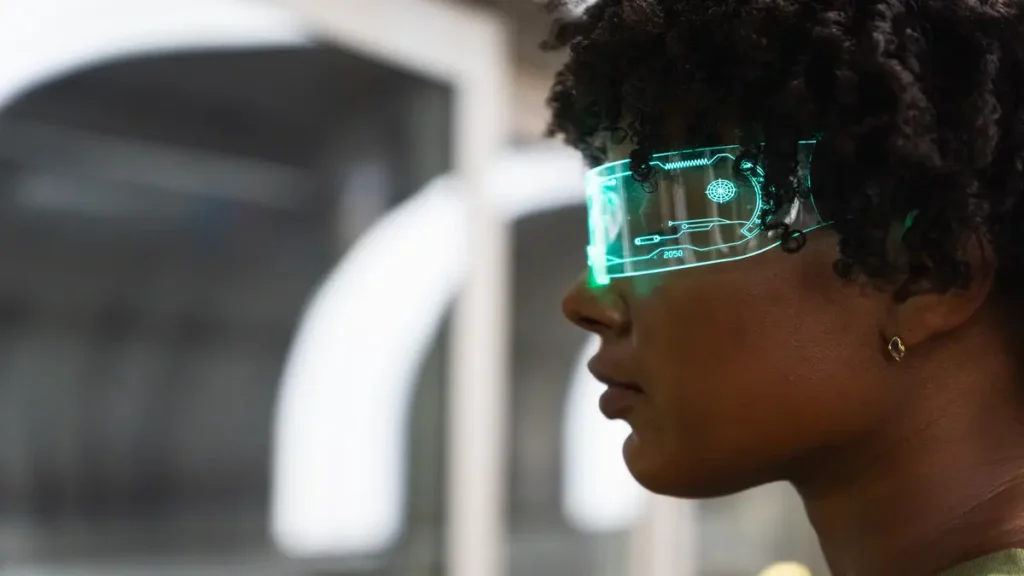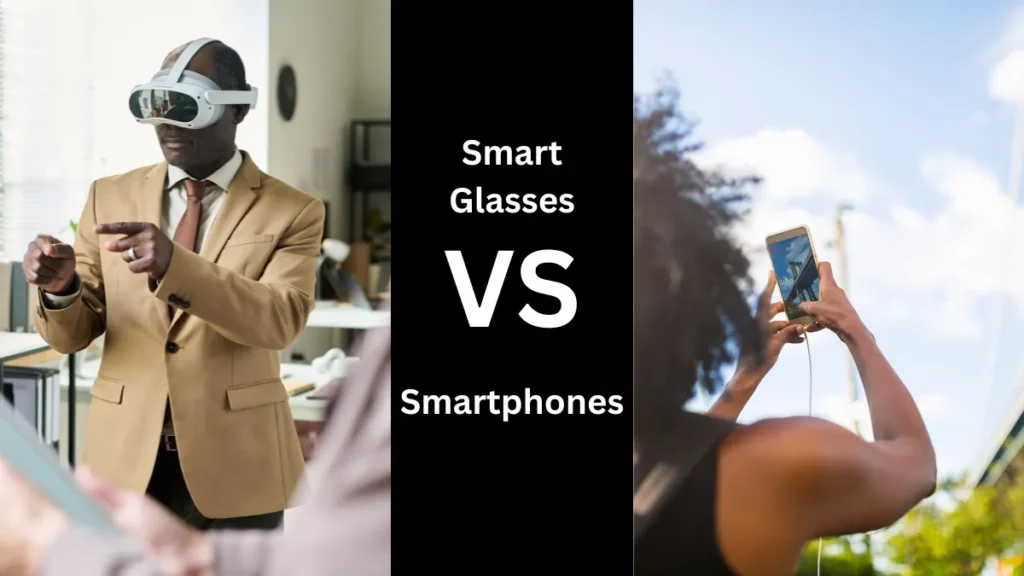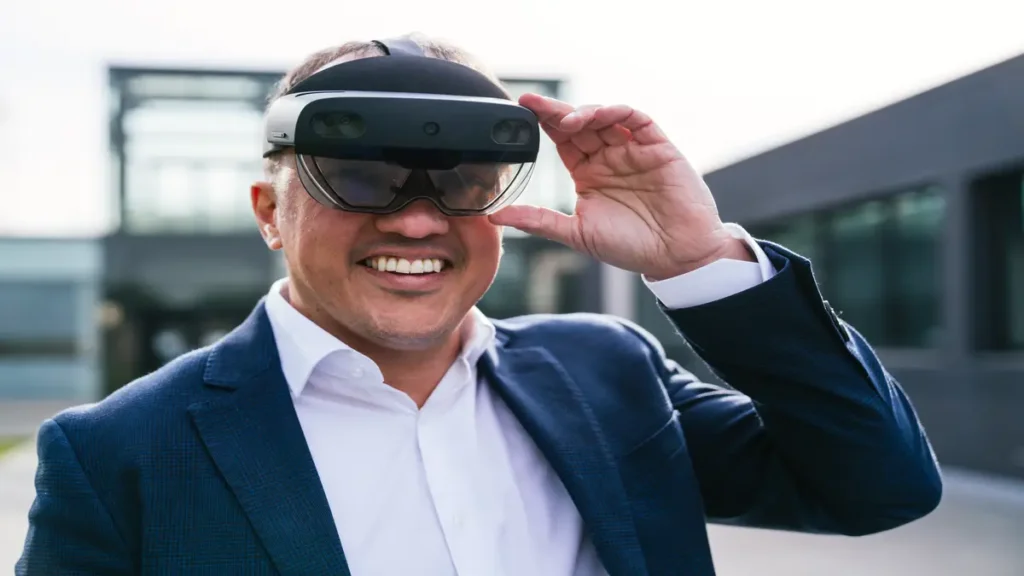The Rise of Smart Glasses: Are Smartphones Becoming Obsolete?
Why Smart Glasses in 2025 Might Be the Next Big Tech Shift Smart technology has long shaped the way we communicate, consume…
Why Smart Glasses in 2025 Might Be the Next Big Tech Shift
Smart technology has long shaped the way we communicate, consume information, and experience the digital world. From the rise of smartphones to the integration of voice assistants and wearable devices, convenience and connectivity have become the norm. But now, in 2025, smart glasses are emerging as the next evolution of personal tech.
Once viewed as a futuristic novelty, smart glasses are now finding their place in the mainstream. With major advancements in augmented reality (AR), voice control, and hands-free interaction, these sleek wearables are challenging the dominance of smartphones. Consumers are increasingly seeking alternatives that allow them to stay connected without constantly reaching for a device. The appeal of having essential features like navigation, messaging, and real-time data overlays directly in your line of sight is pushing this technology forward.
This article explores the current landscape of smart glasses, what makes them stand out in 2025, and whether they truly have the potential to replace smartphones in the near future. As we dig deeper, we’ll look at the features that make smart glasses practical, the industries that are embracing them, and the challenges they still need to overcome. We’ll also consider the broader cultural and behavioral shifts that might accelerate their adoption across both personal and professional environments.
The transition from smartphone dependence to wearable, immersive interfaces could mark the next big shift in how we interact with technology. If history has shown us anything, it’s that user behavior tends to evolve quickly once practical value is proven—and smart glasses may be reaching that tipping point.

What Are Smart Glasses and How Do They Work?
Smart glasses are wearable devices that combine traditional eyewear with advanced computing technology. Equipped with micro-displays, cameras, sensors, and connectivity features, these glasses allow users to interact with digital content without using their hands.
Most smart glasses use AR to overlay digital elements onto the physical world. For example, users can see real-time navigation directions, text messages, or meeting notifications directly in their field of vision. Some models also integrate voice control, gesture detection, and even eye-tracking for more intuitive interaction.
In 2025, the technology has matured significantly. The hardware is lighter, battery life has improved, and integrations with AI and cloud-based platforms have become seamless. This evolution is especially evident in enterprise applications, healthcare, and retail, where predictive analytics tools like those discussed in AI Predictive Analytics in 2025 are being linked to real-time visual data provided by smart glasses.
The design has also seen improvements, with companies prioritizing aesthetic appeal and user comfort. Glasses now look like ordinary eyewear but are packed with high-end tech inside. They’re equipped with dual processors, noise-cancelling microphones, and even voice authentication systems. These upgrades allow users to multitask effortlessly, whether they’re managing smart home devices, attending meetings, or accessing cloud-based documents on the go. The continual development of these features is making smart glasses not just futuristic, but truly functional.
We are also seeing advancements in biometric integration. Some smart glasses now support real-time health tracking, eye diagnostics, and fatigue monitoring—offering new benefits not even smartphones can match. This opens up potential in wellness tech, making the glasses proactive tools in managing daily health. These innovations highlight why many believe smart glasses in 2025 are not just wearable devices, but the next major leap in digital lifestyle tools.
Key Features of Smart Glasses in 2025
What sets today’s smart glasses apart from earlier models is their practical utility. Here are some standout features that define 2025’s top models:
- Voice-Controlled Interfaces: Integration with digital assistants like Google Assistant and Alexa allows users to issue commands and perform tasks without lifting a finger. This makes smart glasses with voice control especially useful in situations where touch interaction isn’t feasible.
- Real-Time AR Overlays: Whether for gaming, navigation, or fieldwork, the ability to display contextual information in the real world is a key selling point.
- Improved Battery Life: Thanks to more efficient chipsets and optimized software, modern smart glasses can now last an entire workday. Improvements in smart glasses battery life have made them more reliable for continuous, daily use.
- Enhanced Connectivity: 5G and Wi-Fi 6E support ensure faster syncing with cloud services and other devices.
- Built-In Cameras and Sensors: From biometric health tracking to object recognition, smart glasses are becoming smarter by the day.
According to a recent report by IDC, smart wearable shipments—including smart glasses—are expected to grow by over 20% annually through 2028, fueled by enterprise adoption and consumer interest.
Moreover, newer models include adaptive lenses that adjust to lighting conditions, making them more usable outdoors and in bright environments. The sound quality of built-in speakers has also improved significantly, using directional audio to keep conversations private. All of this positions smart glasses as not just tech accessories but indispensable personal assistants.
Advanced software also enables real-time language translation, scene recognition, and facial recognition for enhanced situational awareness. Some models even support multi-modal input, combining touch-sensitive temples with voice and gesture input to improve accuracy and accessibility. These advancements collectively elevate the usability of smart glasses to near-mainstream readiness.
And let’s not forget privacy modes—features that automatically disable cameras in sensitive spaces or blur screen output when others are detected nearby. These small innovations address major concerns and reflect the thoughtful direction in which this tech is heading.
This evolution also reflects broader trends in smart glasses features comparison, as consumers and industries weigh the trade-offs between different models and their capabilities. The demand for affordable smart glasses 2025 models has pushed manufacturers to innovate without pricing out everyday users.
Use Cases – Who’s Really Using Them?
Smart glasses are no longer limited to tech enthusiasts or corporate use. A growing number of professionals and consumers are integrating them into their daily routines:
- Healthcare Workers: Surgeons use AR overlays during procedures for real-time guidance.
- Field Technicians: Repair and maintenance workers benefit from remote assistance features.
- Cyclists and Runners: Navigation, speed, and health stats appear without breaking pace.
- Gamers and Creators: Immersive experiences combine with real-world environments.
- Educators and Trainers: Virtual instructions, lesson overlays, and remote feedback are improving learning environments.

On the consumer side, people are beginning to use smart glasses as a way to cut back on screen time. With concerns over digital overload rising, these devices offer a more natural and less intrusive way to stay connected. As explored in our article on Digital Addiction, smart glasses could become a tool for healthier digital habits.
This new wave of adoption isn’t just about novelty. It’s about improving productivity, comfort, and focus in a tech-heavy world. For instance, remote workers and digital nomads are leveraging smart glasses to stay connected in meetings while being mobile, transforming how and where work happens.
Retail environments are another growing use case, where store associates use AR overlays to access product info or inventory status without disrupting customer interactions. In sports, coaches use smart glasses to analyze performance in real time. Construction workers use them to scan blueprints and receive safety updates instantly. This flexibility and functionality are creating entirely new workflows across multiple industries.
This is especially evident in the growing focus on smart glasses for productivity, where they reduce device switching and screen dependency in high-efficiency settings. And as wearable tech gains mainstream traction, the conversation increasingly shifts to the future of wearable tech and what role these glasses will play in it.
Smart Glasses vs Smartphones: Pros and Cons
While smart glasses offer exciting capabilities, they aren’t perfect replacements for smartphones just yet.
Pros:
- Hands-free operation
- Real-time data without distractions
- Discreet access to messages and calls
- Great for multitasking and mobility
Cons:
- Limited app compatibility compared to smartphones
- Shorter battery life in high-performance use cases
- Higher initial cost
- Privacy concerns (especially with built-in cameras)

In a study covered by Wired, experts suggest that while smartphones are still central to digital life, smart glasses are carving out a unique space rather than directly replacing them—for now.
Another point to consider is ecosystem integration. While smartphones remain the central hub of personal data and communication, smart glasses are increasingly positioned as the interface layer, enhancing situational awareness without disrupting flow. Over time, better app support and battery improvements may tip the scales further.
There’s also the social and cultural aspect. Smartphones have deeply embedded social norms for use in public, while smart glasses still raise questions around etiquette, distraction, and surveillance. These issues may slow broader acceptance despite the clear technical advantages.
Industry Giants Investing in Smart Glasses
Major tech companies are betting big on smart glasses. Meta, Google, Apple, and Samsung have all launched or teased next-gen models with cutting-edge features.
- Meta’s Ray-Ban Meta Smart Glasses have integrated AI assistants and camera functionality.
- Apple’s rumored Vision Glasses are expected to connect tightly with the Apple ecosystem.
- Google’s Project Iris aims to blend VR and AR into one sleek wearable.
These investments reflect broader trends in AI integration, like those explored in Revolutionary AI Innovations 2025. The synergy between AI, cloud computing, and smart hardware is what makes this shift sustainable.
Tech giants aren’t the only players. Startups are also pushing innovation forward with specialized glasses for blind navigation, industrial training, and even real-time language translation. This competitive landscape is speeding up development and keeping prices more accessible.
Companies in logistics, defense, automotive, and even fashion are collaborating with tech firms to embed AR capabilities into glasses, enabling real-time updates, safety alerts, and even virtual fitting experiences.

Conclusion
Smart glasses are more than just a futuristic concept—they’re becoming an integral part of how we interact with technology. While they may not fully replace smartphones in 2025, they’re clearly reshaping our expectations around connectivity, productivity, and digital balance.
As tech giants and startups continue to refine design, improve features, and expand use cases, we’re likely to see smart glasses play an even greater role across industries and daily life. Whether it’s minimizing screen time or unlocking new dimensions of AR-powered productivity, their potential is only just beginning to unfold.
Curious how smart glasses are influencing personal health and focus? Don’t miss our article on Digital Addiction. Want to explore how this tech is tied to predictive decision-making in business? Check out AI Predictive Analytics in 2025.
For deeper insight into the technology driving smart glasses forward, read Revolutionary AI Innovations 2025.
For more future-forward insights like this, subscribe to our newsletter and stay ahead of the next big tech wave.





